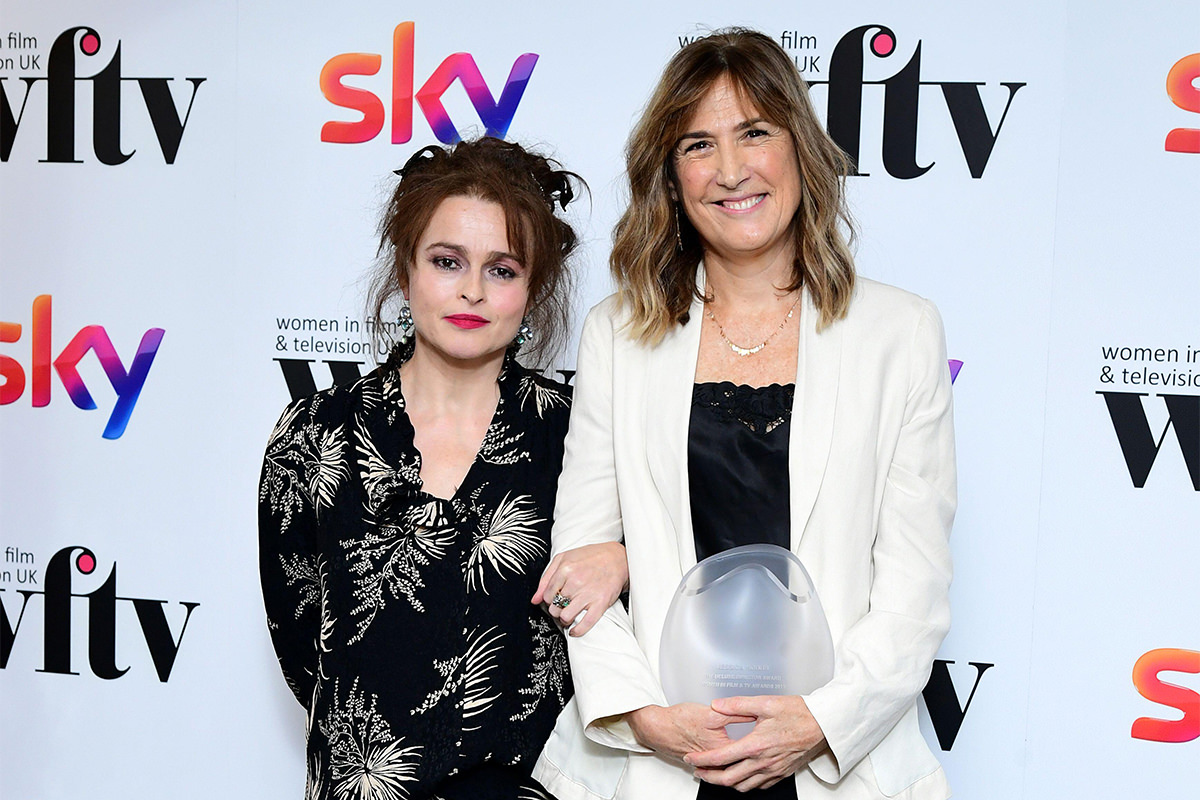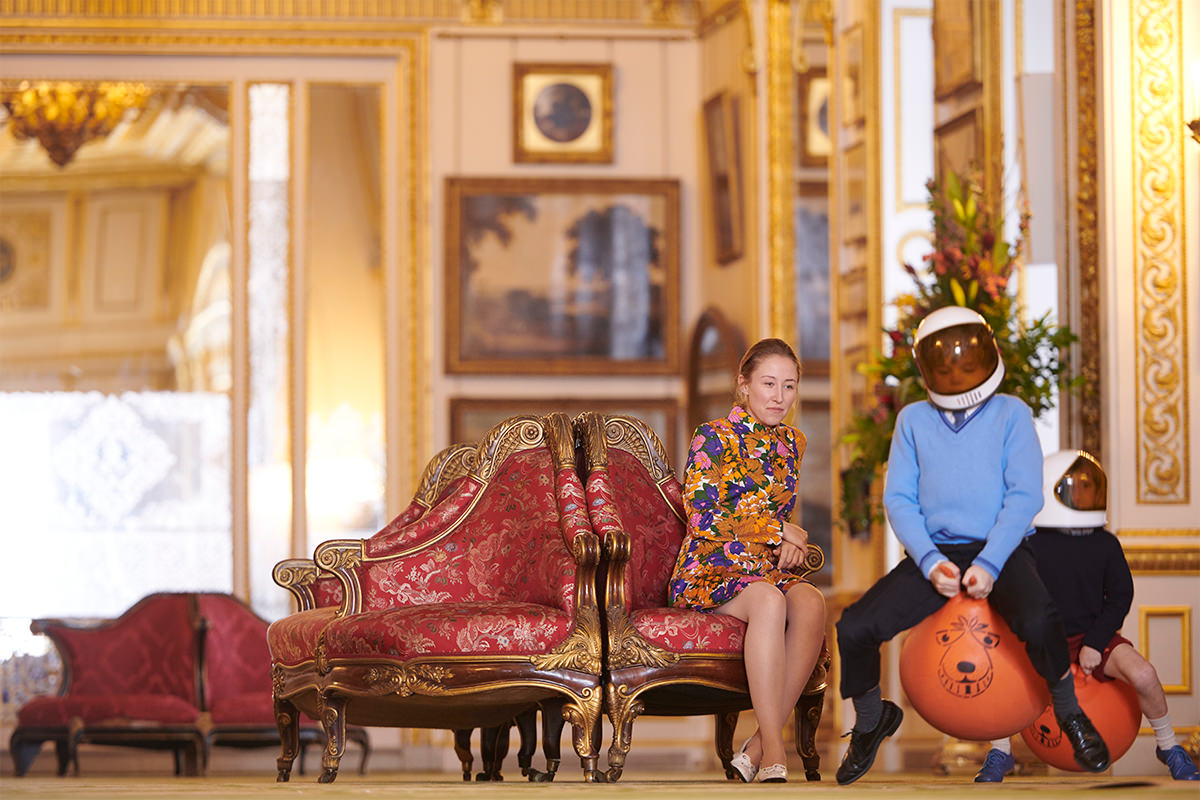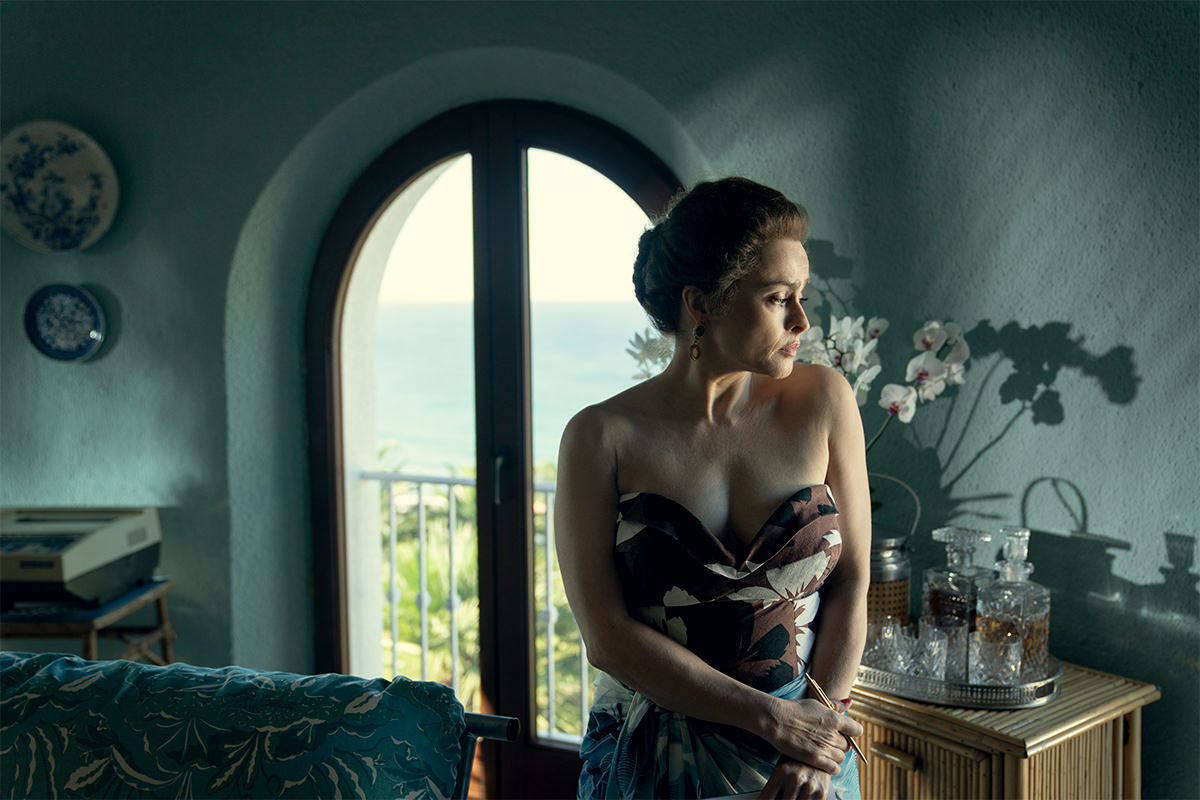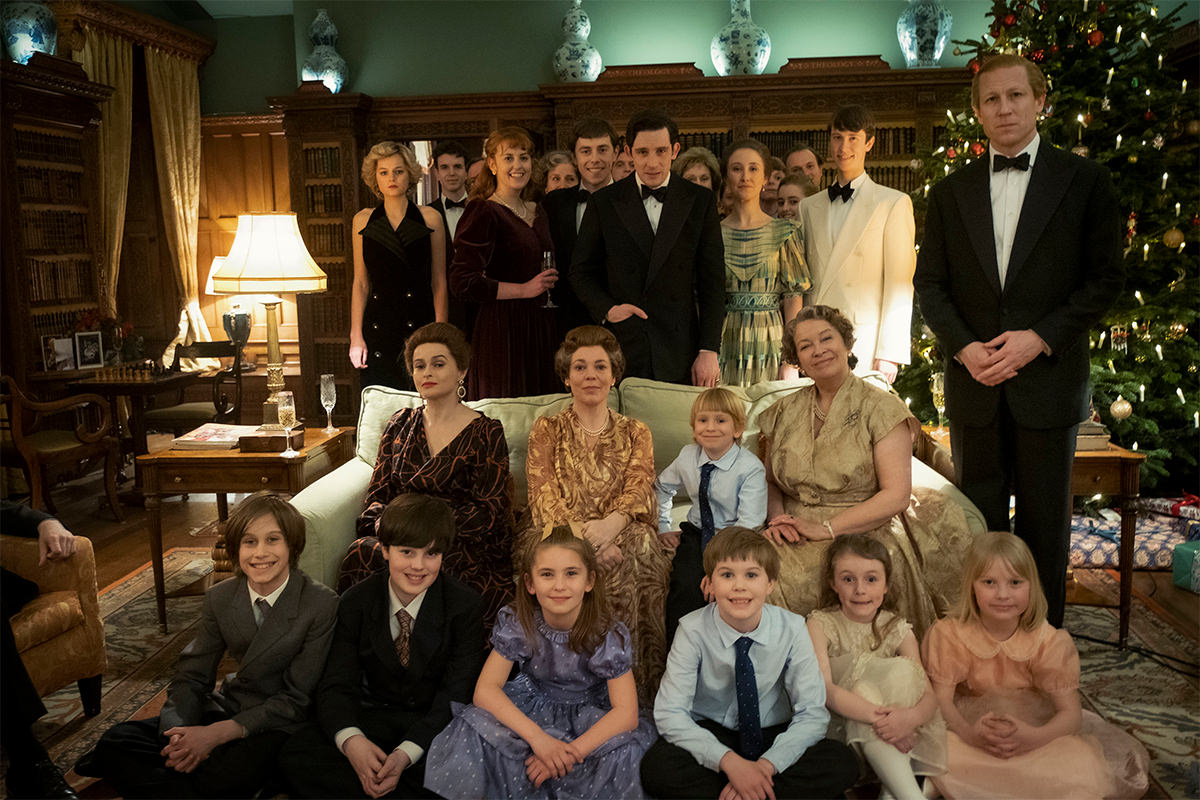Jessica Hobbs: takeaways from directing on season 4 of The Crown
Director Jessica Hobbs on how the Australian television industry prepared her for working on hit Netflix series The Crown.
 Helena Bonham Carter and Jessica Hobbs at the 2019 Women in Film and TV Awards (Photo credit: Ian West)
Helena Bonham Carter and Jessica Hobbs at the 2019 Women in Film and TV Awards (Photo credit: Ian West)
Jessica Hobbs first cut her teeth directing on Australian series such as Heartbreak High, and became a prolific television director, working across iconic series Love My Way, All Saints, The Slap, Devil’s Dust and Rake before making the move to the UK to work on season 2 of Broadchurch – and more recently, Netflix series The Crown.
New Zealand-born Hobbs says the move to the UK was not planned, but came about from meeting with Broadchurch creator Chris Chibnall, thanks to a connection through some Australian writing friends.
“I met Chris Chibnall… I think through Jacquelin Perske and Louise Fox, who worked with him in the Star Wars writing room,” Hobbs says from the UK, where she’s now based.
Chibnall had been listing off a number of Australian shows he loved, when the writers realised the titles all had something in common: Hobbs had directed on all of them. “They just said, ‘you've got to meet Jess.’”
Not long after, Hobbs and Chibnall were at a television festival in Rome at the same time – she was there with lauded ABC series The Slap, while he was there with the British television film called United.
“We met for breakfast at eight thirty in the morning and we were still talking at three thirty that afternoon,” she says. “After that he sent me the scripts and said, ‘I know that you're not thinking about doing this, but I'd love you to come and join us to make this if you want to’. So they brought me across to do it.”
That was some seven years ago. Hobbs has since stayed in the UK, working on BBC One series’ River, Apple Tree Yard, and The Split.
Similar to Chibnall, one of the people who had also been following Hobbs’ work was Suzanne Mackie, an executive on The Crown. Hobbs was called in for a meeting with Mackie and Andy Harries, the CEO of Left Back Pictures, and from there had a lunch with The Crown’s showrunner Peter Morgan about working on season 3.
“They were very keen and I was very keen,” Hobbs remembers. “And then Peter said, ‘which of these episodes are you interested in?’”
From the list, Hobbs was drawn to Moondust, about how the 1969 moon landing sends Prince Phillip into a mid-life crisis, and the finale Cri de Coeur, where Princess Margaret seeks happiness in the midst of a disintegrating marriage (the finale also landed Hobbs with an outstanding directing Emmy nomination).
 The Crown, season 3 episode 7: Moondust (Photo credit: Netflix)
The Crown, season 3 episode 7: Moondust (Photo credit: Netflix)
“I loved the finale because I was very keen to work with Helena [Bonham Carter]. So it was one of those things where it just seemed to fall into my lap, really. It was great.”
Modesty aside, it’s an opportunity that came about from hard work: Hobbs has at this point in her career directed upwards of an estimated 80 hours of television. Heartbreak High is 20+ hours alone.
Reflecting on this journey, Hobbs says: “I feel like I have a very, very firm foundation to lean on. I've gotten very confident and excited about working with cast. I feel like I've had enormous time to practise my craft and to experiment and play around. And so when I get the opportunity to work on something like The Crown, which is on such a kind of global level, I just feel really ready for it.”
Here Hobbs details her experience working on season 4 of The Crown, which is streaming on Netflix now:
You directed episodes 7, 9 and 10 (the finale) on season 4 of The Crown – how did that come about?
In season 4, (showrunner) Peter said, ‘I'm writing one about Princess Margaret and their forgotten cousins and I really, really want you to do that. [And] what about doing the finale again, that pair?’ I said that sound[ed] fantastic and he gave me a kind of rough outline. He's a very good storyteller. He basically talked me through the scripts, which were not far off what we ended up shooting [and portayed] the demise of Thatcher and what was happening with Charles and Diana.
Can you talk through the process of taking Peter Morgan’s writing to the screen?
The writing is so exceptional. It's incredibly economical and it's very muscular. He takes really big ideas and has a great dramatic form in the way that they are portrayed. But you have to do a lot of heavy lifting as a director: you have to lift out the connective tissue and find ways to show some of those themes that he's wanting to explore. But he's really open to you doing that, which is what I love about working with him. He says 'surprise me', so I'll shoot stuff that isn't scripted and he's like, 'oh, it's fantastic. I love that. It's great.' You don't always hit the target, but a lot of the time he's been really delighted. And it always comes from what he's written anyway, so it's just a very symbiotic way of working.
As showrunner, how involved is Peter during the shoot?
I talk to him every single day. He doesn't come to set that often because he's so busy writing. Occasionally, if there's a big two-hander, say there's something between the Queen and Thatcher. Or the first time we did a big Charles and Diana scene. Particularly because (at the time) Emma Corrin was playing the older Diana for the first time, and she and I had been talking about the physical differences and what happens after ten years of marriage compared to, say, the teenager that she was in the beginning. Because she was shooting her early episodes and the last episode simultaneously, which was very challenging for her. So Peter will come to set on those days. And it's like having a playwright because he's able to sit and watch a rehearsal and he understands blocking brilliantly. He's wonderful with the actors. He's like, ‘let's cut this out, you don't need to say all of that’. He’s very bright and extremely good dramatically, so I love having him around.
 The Crown, season 4 episode 7: The Hereditary Principle (Photo credit: Netflix)
The Crown, season 4 episode 7: The Hereditary Principle (Photo credit: Netflix)
How do you juggle fact and fiction in The Crown?
Well, that’s been the challenge of the show all along. I mean, it's a historical drama, based on people and events that have happened, with a lot of stuff that happens in-between that we can never know about. No one ever knows what happens in the audience room: it's never recorded. There's [no known] conversations between prime ministers and the Queen. It always started from that. I mean, (Peter's 2013 play) The Audience started like that, even (2006 film) The Queen started from that. No one knows what happened. And so it's our job and Peter's job to draw those fictional lines in the best way we can to try and represent the story that we're telling.
What are the key differences working on television like The Crown compared to an Australian project?
Just the absolute scale of it: sheer numbers of people, equipment, size of studio, size of houses. The budget means that you can afford a level of detail, which blows your mind sometimes. You walk onto set and just think, ‘I could just look at this all day. It's so beautiful.’ And that's a remarkably privileged position to be in. We have royal advisors on set all the time, so you always have someone you can turn to and go, 'which order do I do and how do they shake hands and what happens at the table here?' It's a real safety net for us.
How different are the UK and Australian systems as a television director?
In principle they're all the same. I've just had a really good run here: I've had seven years of fantastic work. I feel very seen here in my particular way of approaching things. And I've felt really excited by what I've been able to do. I think, yes, scale and budgets are bigger. You certainly get more time - that’s the biggest difference. Even when I first came to do Broadchurch, it was double the number of shooting days straight away. And much more time in pre and post. You get months of pre. When I work on The Crown, it's a year's work for me from the time I start to the time I finish. And that's to do two or three episodes. That's a particularly long gig, but they're usually six or seven months, which is a lot longer than in Australia. And I find that because of that, you can just do more detail in the work. You get a lot more time to really examine the possibilities; to think and recce the locations many more times; do your pre-vis[ualisation]; work with storyboard artists. All those things are available to you. It's still quite fast on set, even though you have more shooting days just because of the scale of the numbers of people, and the time it takes to wig and get people ready for a period piece (each principal character has six wigs each). All of that takes time. But I would find it challenging to go back to that speed of shooting again, I think.
Did working in Australian TV and at that kind of pace, prepare you for international projects like The Crown?
Absolutely, because the stuff I was making in Australia, like when we did The Slap or when I did Devil's Dust, those were still really big shows and they were great fun to do. They were just fast at times. I guess there's a profound difference in that on The Crown, you complete your days, but if you need to go back and reshoot something, that's just not an issue. Whereas we just don't have those kind of budget parameters in Australia. What I think the economies of scale give you in Australia is you really hone your sense of what do I need? What can I really do? [On the other hand] you can try things out here. And if they don't work, it can hit the cutting room floor. That would be quite hard at home because there's less buffering.
Have you been able to experiment as a director or try things out on The Crown?
Tonnes. On The Crown, I even built part of the Columbia space shuttle for the Moondust episode (in season 3), which we ended up shooting, but then not using. It was right not to use it, but it was so much fun to shoot, so the fact that you can do things like that is amazing.
We also shoot a lot in Spain, which I love because I was recreating (the island) Mustique there, shooting underwater and air-to-air stuff with planes. There's an absolutely genius visual effects team, and just the way we work with green screens and studio models to create the plane [moments]. I've also learnt a lot through the crowd replication. I think that was probably the thing I was most nervous about when I came onto the show because I felt like I hadn't really worked on that scale before in visual effects. But they were really reassuring and it was really straightforward. Now, I don't feel anxious about it at all - there's such a logic to it.
 The Crown, season 4 episode 10: War (Photo credit: Netflix)
The Crown, season 4 episode 10: War (Photo credit: Netflix)
How do you bring your own creative voice as a director to a series that’s so established in tone as The Crown?
It's one of the things I asked before I actually signed on to do the job. I said, ‘look, you know my work. I have a particular point of view and a particular approach and style. Are you open to what I will bring to it?’ And Peter said, ‘I want that. I like shaking it up a bit. I like the different voices.’ So particularly, when I started in season 3 because we were moving into the 70s, I wanted to shake up the formality when Princess Margaret takes a lover. And so just saying to the DP, ‘we can loosen off a bit here. I know The Crown is very set in its ways, but this is an anarchic personality coming in, so let's see what we can do to reflect that visually.’ I continued that on into this year and I think it's good for the show to find those different crevices and corners and points of view.
You are so subjective when you come onto a set anyway, no matter how much you think you're fitting into a look and feel of a show, you're always bringing your own particular point of view and your own way of approaching a scene and a story. I just think that's a given. And I just love the fact that they are really open to that on The Crown, so I have people dancing or music or stuff that I like to bleed through and Peter loves all of that. That's great.
What advice do you have for Australian television directors?
The very best thing I learnt along the way was to close your eyes, think about what's most important to you about the story that you're telling, and be able to express that. Therefore be open to what other people's thoughts and opinions are, but be careful not to get lost in trying to please what you think other people want you to shoot. Shoot for yourself, shoot for the story that you are telling. I don't mean in any way to shut others out because I think people's contributions are so important, but really understand what it is you want to say, so that when someone comes up with a different idea or a question around it, your response is very clear in what you're trying to convey to an audience, and those people can hear that. I think that's the most important work you can do: no matter what you're on and no matter how much it feels like a pre-determined show, or that it's already set up, your voice is the most valuable asset that you have as a director. It's the thing you need to both protect and be brave enough about using.
The Crown season 4 is streaming on Netflix now.

What to read next
Jessica Hobbs has directed more than 60 hours of TV drama, from The Slap to Broadchurch. Here she talks career progression.
22 Jun 2016
Megan Simpson